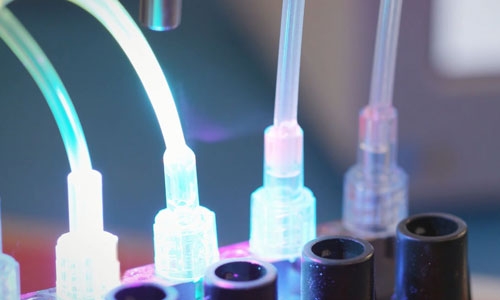Q: Smoke is coming off the light-curable adhesive. What is it?
A: Before we can answer this question, we have to first understand what it’s not. By definition1, it’s not smoke, vapors or outgassing.
What you are seeing coming off of the curing adhesive are fumes generated by the light-curing process. This phenomenon is the result of a very rapid polymerization or chemical reaction that occurs when the liquid adhesive is exposed to the correct wavelength of light. In some instances, heat given off during the reaction (at the molecular level) and heat from the absorption of light energy, can result in a small number of fumes being emitted by the adhesive before the product has a chance to completely polymerize or cure.
Essentially, this phenomenon may emit trace amounts of some of the ingredients (or fractions of the ingredients) contained in the formulation. Please note that the volatilization may or may not be noticeable but is almost always a very small amount.
Are the fumes hazardous? Always consult the MSDS to answer this question. However, if the liquid itself poses a risk to the user, then good manufacturing practices for the particular process may suggest incorporating an exhaust system in the bonding area to remove the fumes during the light-curing step.
Definitions 1:
Vapor: The gaseous state of a substance that is solid or liquid at temperatures and pressures encountered. NIOSH (National Institute for Occupational Safety and Health definition)
Fume: A solid condensation particulate, usually of a vaporized metal. NIOSH Definition (This could also be generated from curing Dymax adhesives)
Outgassing: The release of absorbed or occluded gases or water vapor, usually by heating in a vacuum. (Web definition)
Smoke: The vaporous system made up of small particles of carbonaceous matter in the air, resulting mainly from the burning of organic material. (Web definition)
_________________________________________________________
Enjoying This Content? Let’s Stay Connected.
If you’re finding value in our insights, why not get more of it—delivered right to your inbox? Subscribe to receive the latest technical articles, white papers, product news, and expert tips.

